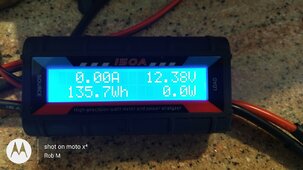DIY_And_Artsy_Guy
New Member
Hello, All!
I'm completely new to solar setups, and at this point I am just researching, but I have something specifically in mind. If I sound like a total and complete dipstick, please explain how. I think I've got the general just of things from the research I've done the last couple of weeks, but I could be completely wrong since I've never talked with someone who's done this before.
I am planning on going completely off grid at some point this year. I understand that you can create large solar setups to run an entire camper, but I'm not comfortable doing something that large scale starting off. My goal is to run my 4.2cu foot single mini fridge. I've been contemplating using 2 6v batteries that I already have (bought by mistake at Christmas and never got around to returning them) rather than buying a single 12v to test it out. The question is would my two 6v LiFePO4 with 6Ah and 36Wh run my mini fridge the same as a 12v in a solar set up? Just the mini fridge. Would it be worth it to try, or am I likely to nuke my fridge if I try?
I'm completely new to solar setups, and at this point I am just researching, but I have something specifically in mind. If I sound like a total and complete dipstick, please explain how. I think I've got the general just of things from the research I've done the last couple of weeks, but I could be completely wrong since I've never talked with someone who's done this before.
I am planning on going completely off grid at some point this year. I understand that you can create large solar setups to run an entire camper, but I'm not comfortable doing something that large scale starting off. My goal is to run my 4.2cu foot single mini fridge. I've been contemplating using 2 6v batteries that I already have (bought by mistake at Christmas and never got around to returning them) rather than buying a single 12v to test it out. The question is would my two 6v LiFePO4 with 6Ah and 36Wh run my mini fridge the same as a 12v in a solar set up? Just the mini fridge. Would it be worth it to try, or am I likely to nuke my fridge if I try?



